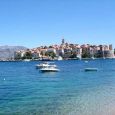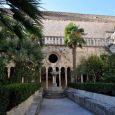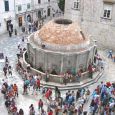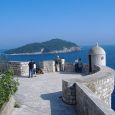Dubrovnik
Advertisement
By Air
Èilipi Airport serves the city of Dubrovnik and provides an essential gateway to one of Croatia’s most popular holiday destinations. The airport is a 15-minute drive from the city and is served by a reasonable selection of ground transportation options, which includes a regular bus service, hotel shuttles and taxis. Èilipi Airport is connected with a large number of significant EU cities as well as a number of international destinations.
By Ferry
Italy is the only EU country from which Croatia can be reached by ferry. Ferry services from Venice and Rimini are provided by Venezia Lines while other ferries from Ancona, Civitanova and Pescara are provided by SNAV ferries Once in Croatia, you will need to make your way down to Dubrovnik by road.
By Bus
Eurolines in conjunction with Autotrans provide options for reaching Dubrovnik by bus from a variety of EU destinations. Once in Croatia, Autotrans also provide cross-country services from Zagreb and other major towns to Dubrovnik.
Advertisement
Franciscan Monastery
Built in the 14th century, this Franciscan church and monastery is located in the Old City and is home to a proud collection of ancient manuscripts, which are available for visitors to view in a beautifully decorated reading room. A similarly grand library, which over the years has been used by a host of historians and famous writers, is also open for viewing. Within the monastery is a fascinating pharmacy museum that contains artefacts from the original medieval pharmacy that was in operation here as early as 1317. Classic architecture on the outside and a well preserved interior make the monastery a must-see for those interested in history.
Korcula Island
Just a little over 2km / 1mi from the tip of the Peljesac Peninsula is the beautiful Island of Korcula. Korcula is one of the largest islands in the Adriatic. Covered in forest and dominated by the mountains that form the backbone of the island, Korcula is a very popular tourist destination. The main town is Korcula and lies just across the channel from the town of Orebic, on the Peljesac Peninsula. The two towns are connected by regular ferry service.
Evidence shows the island was inhabited during Neolithic times, perhaps as early as 6500 BC. Much later the Romans inhabited Korcula, and called the island Korkyra Melaina, or Black Corfu, because of the pine forests. Although it is the subject of much debate, it is also believed that the 13th Century explorer, Marco Polo was born on the island of Korcula.
St Saviour's Church
Located opposite one of the Onofrio’s fountains, inside the Pile Gate, St Saviour’s Church dates back to the 16th century, when it was built by Petar Andrijic of Korcula. From the outside, visitors can view a splendid Renaissance-Gothic façade, while inside, a recently restored interior features fine marble surfacing and some interesting ceiling paintings. The church was unaffected by the 1667 earthquake and hence features all of its original architectural features.
Onofrio's fountains
Located inside the Pile Gate, the Onofrio’s fountains are two of the city’s most distinctive landmarks, which date back to the beginning of 1438, and are hence among the city’s oldest features. The fountains were the combined design work of architect Pietro di Martino and Italian hydro-engineer Onofrio della Cava, and were originally created for visitors to clean themselves of any possible plague bacteria prior to entering the city. The 1667 earthquake took its toll on the fountains stone ornamentation, leaving only 16 of the original heads. During the summer, the fountains are a popular place to soak hand towels and headscarves for the purpose of cooling off in the steamy Dubrovnik heat.
City Walls
The city walls of Dubrovnik are one of the city's best known features. Built in the 10th century and modified in the 13th to 14th centuries the walls, some up to 6m / 19ft thick, provided a solid defense against invaders. The total length of Dubrovnik's city walls is 1949m / 6390ft and they make a great spot for a casual stroll. Tremendous views can be had from Dubrovnik's city walls out over the Adriatic and inwards over the old town center.
As part of the city walls of Dubrovnik there are two towers, the Minceta Tower and the Bokar Tower and two forts, the Lovrjenac Fort and the Revelin Fort. The main entrance to the walls is located just to the left of the Pile Gate and an admission is charged.
April - October
July - August -> 29(°C) - Summer
January - February -> 6(°C) - Spring
Advertisement








